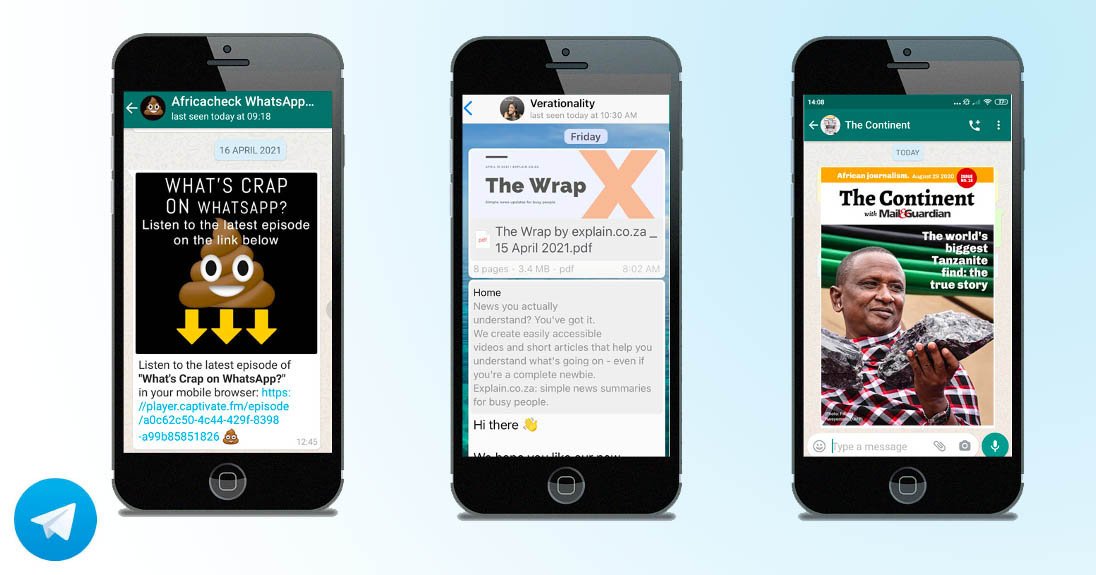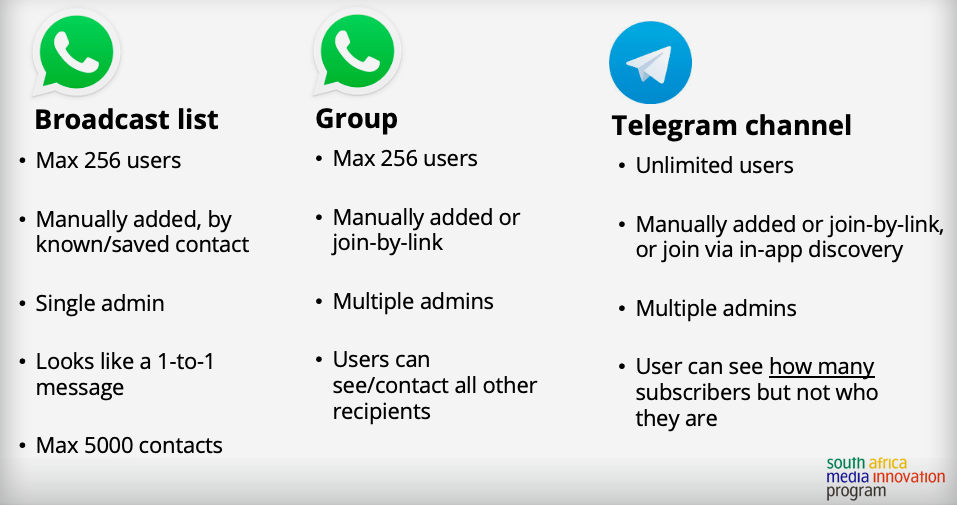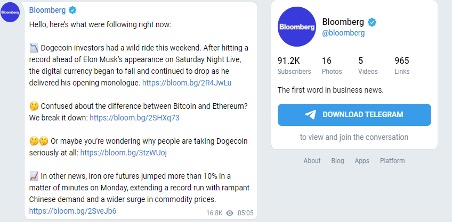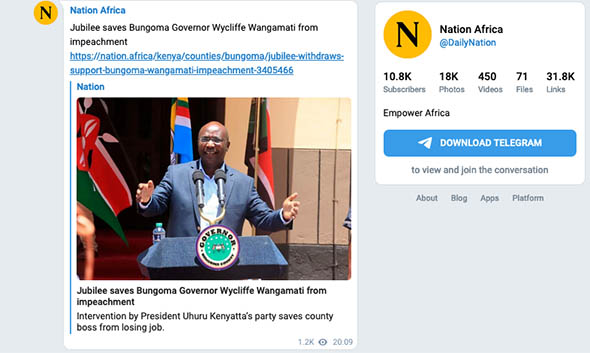A few global news brands have made good use of Telegram as a publishing channel. Is there an opportunity for South African publishers to do the same?
A number of South African publishers have made innovative use of WhatsApp as a publishing channel:
As we previously covered, podcasting start-up Volume produces the myth-busting podcast What’s Crap on WhatsApp with fact-checking agency Africa Check. Verashni Pillay’s Explain.co.za weekly news digest, The Wrap, includes a loyal audience on WhatsApp. And last year, Mail & Guardian journalists received the African Digital Media Award for The Continent, a made-for-mobile weekly ‘newspaper’ distributed primarily over WhatsApp.

But while the app’s audience reach is undeniable, WhatsApp’s platform limits come with some built-in drawbacks.
“The app has made it very difficult to mass broadcast. There isn’t a technical solution that we have found that isn’t very expensive,” The Continent’s Simon Allison told the Reuters Institute earlier this year.
As SAMIP participants have previously discussed, WhatsApp publishing projects face a fairly strict size limit, with WhatsApp business accounts restricted to a total of 5000 contacts, a limit on group sizes and a manually operated approach for creating broadcast lists.
So what are the alternatives? A recent discussion by the South Africa Media Innovation Programme (SAMIP) explored the possibilities of Telegram as a platform for local publishers. The Telegram app has become a major platform for publishers in Eastern Europe, South Asia, the Middle East and Ethiopia.
While its South African audience is a fraction of WhatsApp’s, Telegram did see a brief spike in downloads in January following the backlash over WhatsApp’s privacy policy updates. While there is limited public data on Telegram’s active audience size in South Africa, this growth could represent an opportunity for publishers looking to find a new audience on the app.

So what are Telegram’s publishing features?
No caps on audience size
As opposed to WhatsApp where broadcast lists are limited to 256 members, and business accounts are limited to 5000 contacts in total, Telegram channels do not have any limit on number of users. Telegram users can see how many people are subscribed to a channel, but not who those users are.
Audience growth is automated
Audience growth in Telegram is less labour intensive than WhatsApp, where publishers must manually add each audience member, and have the audience save the publisher’s contact on their side as well. Telegram users can subscribe to your channel in multiple ways, with options for users to be manually added, join via a link, or in the case of public channels, discovery the channel via Telegram’s in-app directory.
Stats and analytics
Whereas WhatsApp publishers don’t have a clear picture of how many of their audience are actually reading what they’re being sent, publishers get useful engagement stats on Telegram Channels, including how subscribers read each post, and for channels with more than 1000 subscribers, the number of shares per post, and percentage of subscribers that have notifications enabled. More here.
Sleek display options
Telegram’s Instant View allows publishers to create Telegram-friendly templates for their websites, which can then open seamlessly in the app itself with zero load time. While most news services on Telegram might prefer to use the app to direct traffic to their website, Telegram’s Medium-like publishing tool, telegra.ph, also offers a quick way to create richly formatted long-form content that opens instantly for Telegram users. See more here.
Who’s doing Telegram news services right?
Telegram’s largest news audiences are not in English markets – it has major footprints in Eastern Europe, and the Amharic news channel Tikvah has garnered over a million subscribers in Ethiopia. But a number of mainstream English-language news operations have made found engaged audiences via Telegram:
The Quint
The Quint is an English and Hindi general news channel reporting on top news headlines and publishes at least one article every hour on Telegram. Find it at https://t.me/TheQuint
Bloomberg News
Bloomberg delivers business and markets news, analysis, and data to the world. The channel cuts down on notifications by delivering twice-daily summaries of top three stories. Find it at https://telegram.me/bloomberg
Daily Nation
Daily Nation is a Kenyan publisher with a Telegram channel delivering a combination of breaking news stories and in-app graphics displaying soundbites from prominent newsmakers, and key news stats such as the latest Covid-19 case data. (As a cautionary tale, there is also at least one fake Telegram channel posing as Daily Nation channel, which includes fraudulent M-Pesa payment links claiming to offer readers access to premium content.) Find it at https://t.me/DailyNation
Telegram for SA news?
While Telegram’s broadcast and automation features offer a clear opportunity for news publishers, it remains to be seen whether the platform is right for South African news organisations. It may also be that Telegram’s ‘platform baggage’ as a preferred platform of right-wing news sources and extremist groups in the US and elsewhere is a further dissuasion for local publishers or audiences.
If there is an opportunity to replicate and expand the kind of success local publishers have seen with WhatsApp, it may lie in other platforms entirely – such as with Ayoba, a zero-billing news and social portal for MTN subscribers, or Moya, the emerging data-free messaging app now boasting around 3 million daily users in South Africa.
Whether on these, or Telegram, or another platform entirely, as more publishers look to invest in messenger-app projects, the potential of each is sure to be tested.
Want to hear more from SAMIP? Subscribe to our newsletter here.




